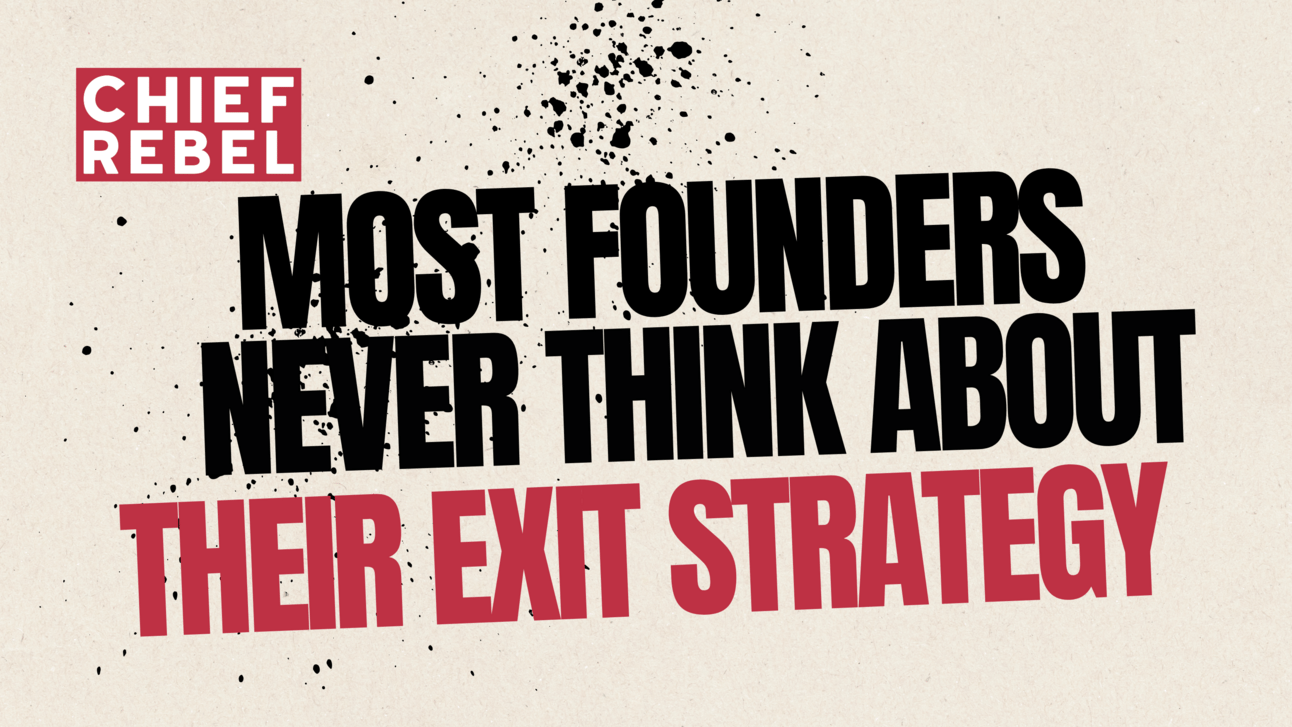- Chief Rebel
- Posts
- 🔥 Most founders never think about their exit
🔥 Most founders never think about their exit
They’re busy with daily fires, chasing growth, fixing problems.

Hey, it’s Kinza. In today’s issue.
One founder got clear on job-level profitability —> $$$$
Another realized his business isn’t worth 2x revenue like he thought :(
Both made the shift from founder to Chief Exit Officer
I post every day on LinkedIn here.
Best Links
💰Tech Tools We’re Loving:
PhantomBuster let’s you auto-connect with people who view your LinkedIn page and send a message while they’re still warm. No manual follow-up needed.
🌟 Industry Trends:
Home services are getting a back office face lift. Blue-collar industries (HVAC, plumbing, landscaping) are automating routine tasks like scheduling, marketing, and invoicing.
🍏 Extra Credit:
Long-time favorite read is Shoe Dog by Phil Knight. Can’t help but get motivated with a Just Do It mindset.
The Highs
One of our group coaching members used to run the business by gut feel.
If cash was in the bank, things were fine.
If a client paid late, panic mode.
He couldn’t tell which jobs were profitable…only which ones felt like they were.
Then we changed one thing.
He started reporting his financials like a buyer would.
Not for vanity. Not for tax season.
For clarity.
We rebuilt how he tracked job-level profitability.
Now he knows exactly which projects carry the business
and which ones quietly bleed it dry.
As an owner, you probably know which jobs work and which don’t.
But a buyer doesn’t.
If it’s not documented, repeatable, and easy to follow, it becomes a red flag.
When it's clear and systemized, it becomes a value driver.
What used to be a liability is now one of his biggest strategic advantages.
& Lows
Another founder I chatted with last week made a different discovery.
When I asked him what his business was worth, he said
“Probably one to two times revenue.”
Wrong.
Buyers don’t price based on top-line revenue.
They price based on Seller’s Discretionary Earnings, real, adjusted profit.
Most small businesses sell for two to four times SDE.
That one bad assumption forced a hard realization.
Either his exit timeline just doubled,
or he had to start building enterprise value right now.
It was a wake-up call. And the start of a much better plan.
This is what the shift looks like.
From running the business to building the asset.
From instinct to insight.
From founder to Chief Exit Officer.
You don’t have to sell this year.
But you should be building a business that runs without you…even if you never hand it off.
Takeaways
Your valuation isn’t a reward for working hard.
It’s a reflection of how well your business runs without you.
Step into the Chief Exit Officer mindset.
Not a CEO?
Send this newsletter to someone who is.
Before You Go: Two Ways I Can Help
Wondering what your business is actually worth? Start here → Last two slides of this guide are gems
Want to talk through your exit or growth strategy? Schedule a no pressure consult. Let’s see where the gaps are and how to close them.
See you next week.
-Kinza
 |
|

Reply